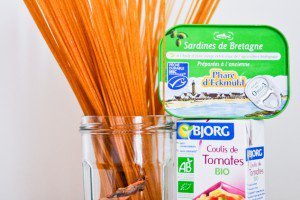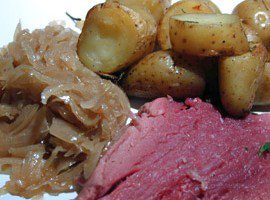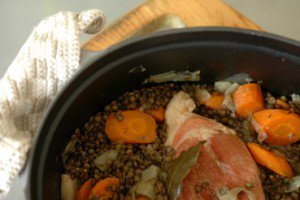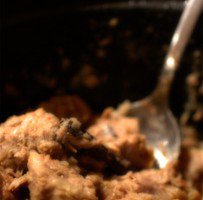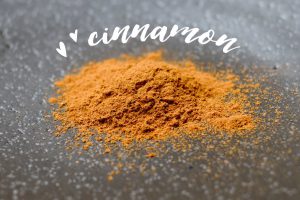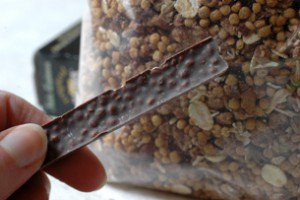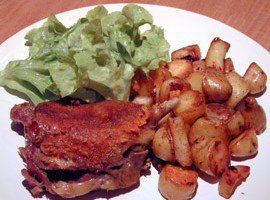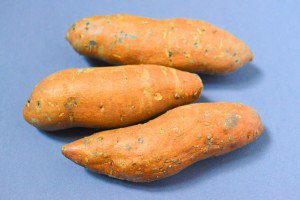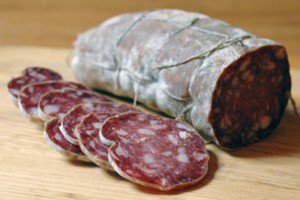As I mentioned in the January newsletter and on this forum thread, one of my current aspirations is to learn more about Japanese cooking.
I have worked on assembling a good pantry of essentials — always the most daunting step when one tackles a new style of cuisine, I think — and now the real fun has begun, as I teach myself the basics by following trusted recipes.
Maki, whose blog Just Hungry has been around for about as long as mine, has been a great help in that endeavor, thanks to her approachable voice and limpid instructions. Her bento blog, too, is a bottomless source of inspiration.
The sauce is very quickly put together from just a handful of ingredients, and it lends the quinoa a keen, lightly caramelized flavor that is most flattering.
I also have a Japanese friend living in Paris, with whom I have plans to swap cooking lessons: I’ll teach her French recipes and she’ll teach me Japanese recipes, an arrangement for which our respective boyfriends show unrestrained support.
And I have been using a lovely cookbook called Une Japonaise à Paris, written by Kaori Endo. In it this young Japanese woman, who works in the kitchen of the new Rose Bakery location in the Marais, shares homestyle recipes using ingredients that are reasonably easy to find in a city such as Paris.
One of the dishes in this book is a kamo-soba salad that features duck (kamo) magret with leeks and buckwheat noodles (soba), a combination of flavors that is classic in Japanese cuisine, Kaori-san notes. I haven’t yet tried making the recipe in its entirety, but the sauce used to dress the noodles caught my eye, and has become a favorite way of seasoning quinoa.
It is very quickly put together — it can be prepared while the quinoa cooks — from just a handful of ingredients, and it lends the quinoa a keen, lightly caramelized flavor that is most flattering. We usually have it warm when it’s freshly cooked, as a side to grilled mackerel or duck breast for instance, and eat the leftovers at rooom temperature the next day, topped with smoked tofu or soft-center hard-boiled eggs.
I will note that quinoa is absolutely not a traditional Japanese ingredient, but when I consulted Maki, she replied that “it has become more popular recently as a healthy whole grain, or as it’s called in Japanese zakkoku (mixed grains or coarse grains). Quinoa in Japan is called kinua (キヌア) in katakana, indicating it’s an imported food (and word). As far as I can recall, it’s only in the last 5-6 years or so that it began appearing in Japanese magazines and cookbooks. Health-conscious people use it in all kinds of dishes, with Western, Asian or Japanese flavors.”

Have you tried this? Share your pics on Instagram!
Please tag your pictures with #cnzrecipes. I'll share my favorites!
Ingredients
- 190g (1 cup) uncooked quinoa (I like red best, or a mix or red and white)
- 1 small knob fresh ginger
- 2 shallots (or 1 small yellow onion)
- 1 tablespoon sesame oil
- 3 tablespoons sake
- 3 tablespoons soy sauce (certified gluten-free if needed)
- 1 teaspoon unrefined brown cane sugar
- A pinch of ground chili
Instructions
- Rinse the quinoa in fresh water (this helps remove the bitter dust that coats the grains). Bring 360ml (1 1/2 cups) water to a simmer. Add the quinoa and simmer, partially covered, for 10 minutes. Remove from the heat, cover, and let rest for at least 10 minutes; a little more is fine. The grains will continue to unfurl and plump up during this time; it will have absorbed all the water and won't need draining.
- While the quinoa is simmering, peel and grate the ginger, then peel and dice the shallots.
- Heat the sesame oil in a medium skillet over medium heat. Add the ginger and shallots and cook for 3 minutes, stirring frequently, until softened. Stir in the sake. When it has evaporated, add the soy sauce, sugar, ground chili, and 60ml (1/4 cup) water. Simmer for 2 minutes, until slightly thickened. Remove from the heat.
- When the quinoa is ready, add it to the skillet and stir to coat. Serve warm, as a side to grilled mackerel or duck breast, or at room temperature, topped with tofu or soft-center hard-boiled eggs.
Notes
Sauce recipe adapted from Kaori Endo's Une Japonaise à Paris.




